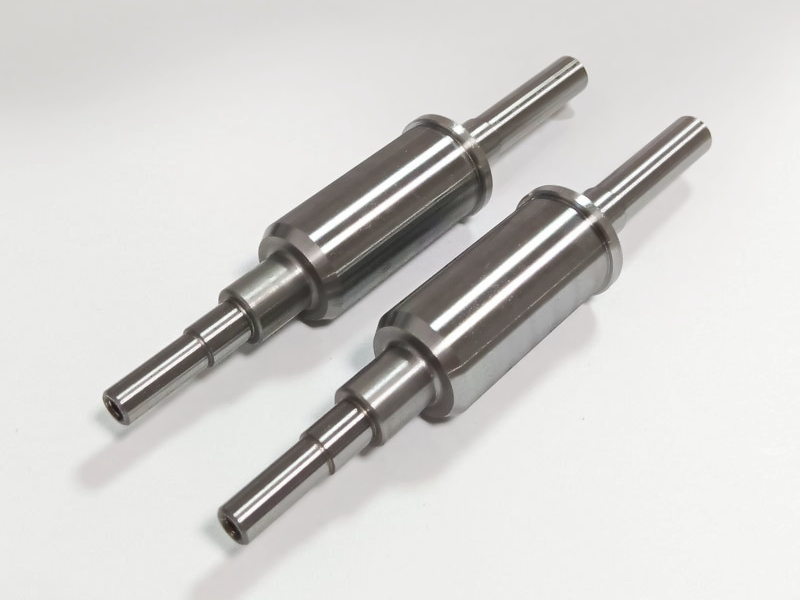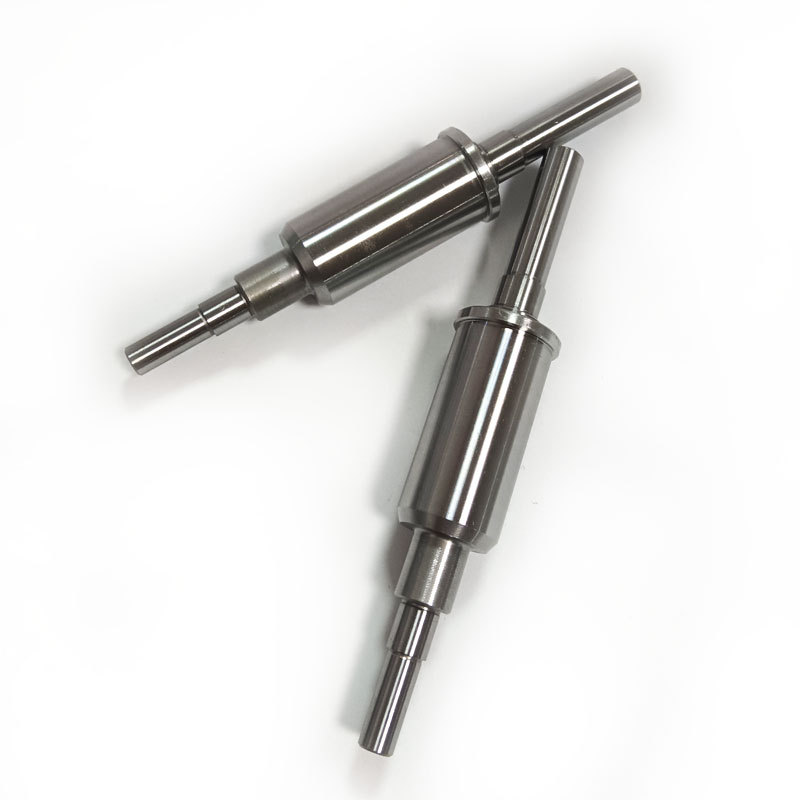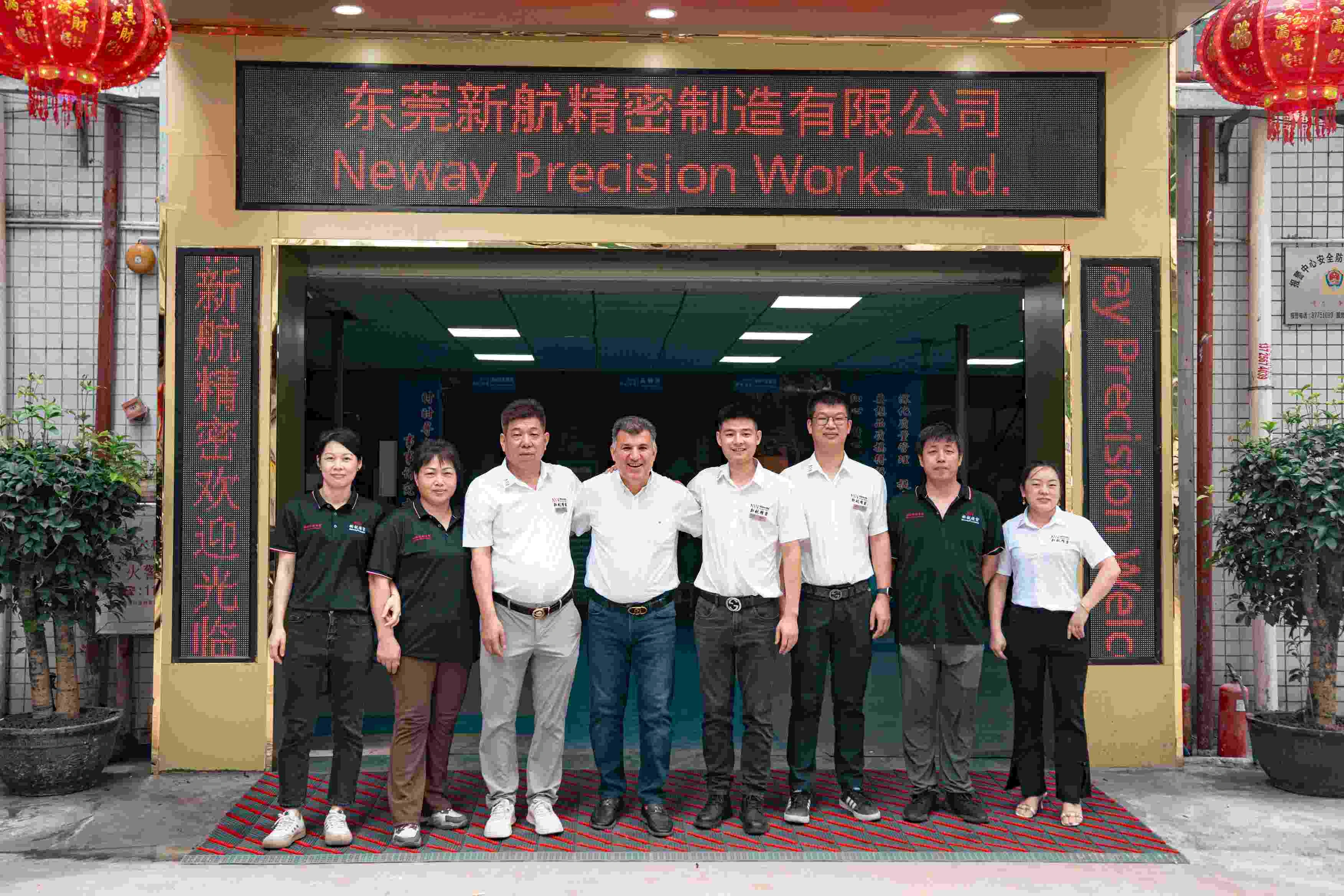CNC Turning and Grinding Solutions for 5140 Steel Servo Motor Spindles in Automation Systems
CNC Machining of Servo Motor Spindles: Precision and Reliability for Automation Performance
Servo motor spindles are critical motion control components in automation systems, requiring high concentricity, wear resistance, and dimensional stability under high-frequency start-stop cycles. At Neway, we manufacture high-precision servo spindles using CNC turning and CNC grinding processes, tailored for automation equipment and motion control systems.
Machined from 5140 alloy steel and treated with nitriding, these spindles offer long service life, stable performance, and fatigue resistance in high-speed, high-precision servo assemblies.

Why 5140 Steel Is Ideal for Servo Spindle Applications
Alloy Strength and Nitriding Compatibility
5140 steel (also known as 41Cr4) is a chromium-alloy medium-carbon steel with good tensile strength (~800–1000 MPa) and enhanced toughness. Its chromium content makes it ideal for nitriding surface treatment, providing excellent case hardening characteristics without distortion.
Dimensional Stability for Precision Motion
5140 steel maintains excellent core strength and rigidity after thermal processing, making it suitable for servo spindles that demand ±0.005 mm tolerances across ground journals and mounting interfaces.


CNC Turning and Grinding Process for Servo Spindles
CNC Turning for Profile Accuracy and Shaft Features
We perform rough and semi-finish turning on multi-axis lathes, creating complex shaft geometries such as:
Bearing journals
Threaded ends or locking grooves
Motor-side keyways or tapers
Turning tolerances:
Diameter: ±0.01 mm
Surface finish (pre-grind): Ra ≤ 3.2 µm
Runout control: ≤ 0.02 mm across shaft length
CNC Grinding for High-Speed Rotational Interfaces
After heat treatment, CNC grinding is applied to bearing zones, coupling ends, and seating shoulders to achieve:
Final OD tolerance: ±0.005 mm
Surface finish: Ra ≤ 0.4 µm
Roundness and straightness: ≤ 0.01 mm
These properties are critical for low-vibration, high-accuracy servo operation.
Nitriding Surface Treatment for Wear and Life Expectancy
We apply gas nitriding to 5140 shafts to enhance surface hardness without compromising core ductility. Our nitriding process achieves:
Surface hardness: 950–1100 HV
Case depth: 0.3–0.6 mm
White layer minimization for structural integrity
The result is a hardened surface resistant to friction, micro-pitting, and fretting corrosion—ideal for servo applications with frequent directional changes.
Quality Assurance and Technical Validation
CMM inspection of bearing fits, spline alignment, and shaft runout
Surface roughness profiling after grinding
Microhardness testing for nitrided layers
Documentation: material certificates, heat treatment reports, full dimensional QC
Why Choose Neway for CNC Servo Spindle Manufacturing
Specialized in 5140 alloy steel machining for motion components
Integrated nitriding services with low-distortion processing
Low-volume to mass production with fast tooling adaptation
One-stop CNC manufacturing for custom automation shafts and spindles
CNC Services for Automation Spindle Projects
Neway supports automation integrators and OEMs with complete manufacturing of servo spindles tailored to tight tolerance and surface integrity requirements. Our capabilities include:
CNC Turning and Grinding: From rough profiling to fine finishing with high precision
5140 Steel CNC Machining: For performance-critical rotating components
Advanced Nitriding Solutions: For long-lasting, wear-resistant spindle surfaces
Partner with Neway for servo motor spindles that meet the performance and lifecycle demands of modern automation systems.
FAQs
What are the typical tolerances for CNC-machined servo spindles?
How does nitriding benefit servo motor shaft durability and precision?
Can Neway support different coupling geometries or custom end forms?
How is shaft concentricity and straightness verified post-nitriding?
What is the typical production lead time for servo spindles?
